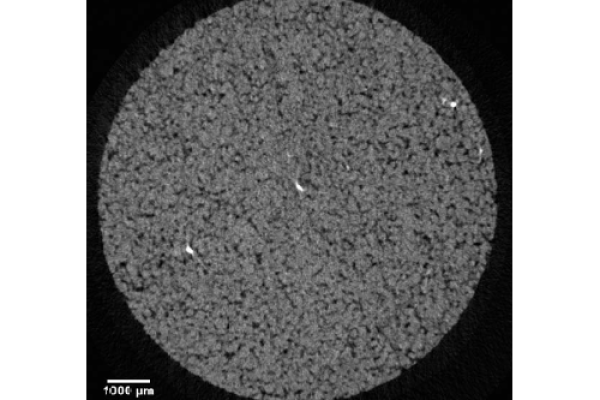We describe an imaging and pore-scale modelling study of capillary trapping in the Paaratte Sandstone formation in the Otway Basin, Australia. Three-dimensional X-ray computed tomography (micro-CT) was used to characterize the pore structure of the reservoir core. We obtain in-situ pore-scale images of the distribution of CO2:brine analogue fluid pairs (octane:brine) within reservoir samples during low capillary number drainage and imbibition flooding experiments. The images were recorded using time-lapse X-ray micro-tomography at elevated pressure. The observed two-phase fluid distributions are consistent with a water wet system. The microCT images are used directly as input to a geometrically accurate quasi-static pore-scale simulation model. The validity of the quasi-static assumption is investigated by comparing on a pore-by-pore basis the simulated and imaged fluid distributions. The pore filling states are in good agreement both for drainage and imbibition displacements and the computed capillary trapping curve agrees with experimental data. This indicate that quasistatic pore-scale physics can be used to obtain averaged or continuum flow properties for low capillary number
displacements. We perform a sensitivity study of the impact of the advancing contact angle on capillary trapping.
The magnitude of residual trapping increases with decreasing contact angle. Land's trapping coefficient increases with increasing contact angle. We compute capillary pressure and relative permeability scanning curves.
Simulated relative permeability hysteresis is compared with that predicted by the industry-standard Carlson's and Killough's models. Killough's model reproduces the simulated data more accurately.
Key words: Capillary trapping, CO2 storage, Micro-CT, Imaging, Pore-scale modeling
For full paper click here.






